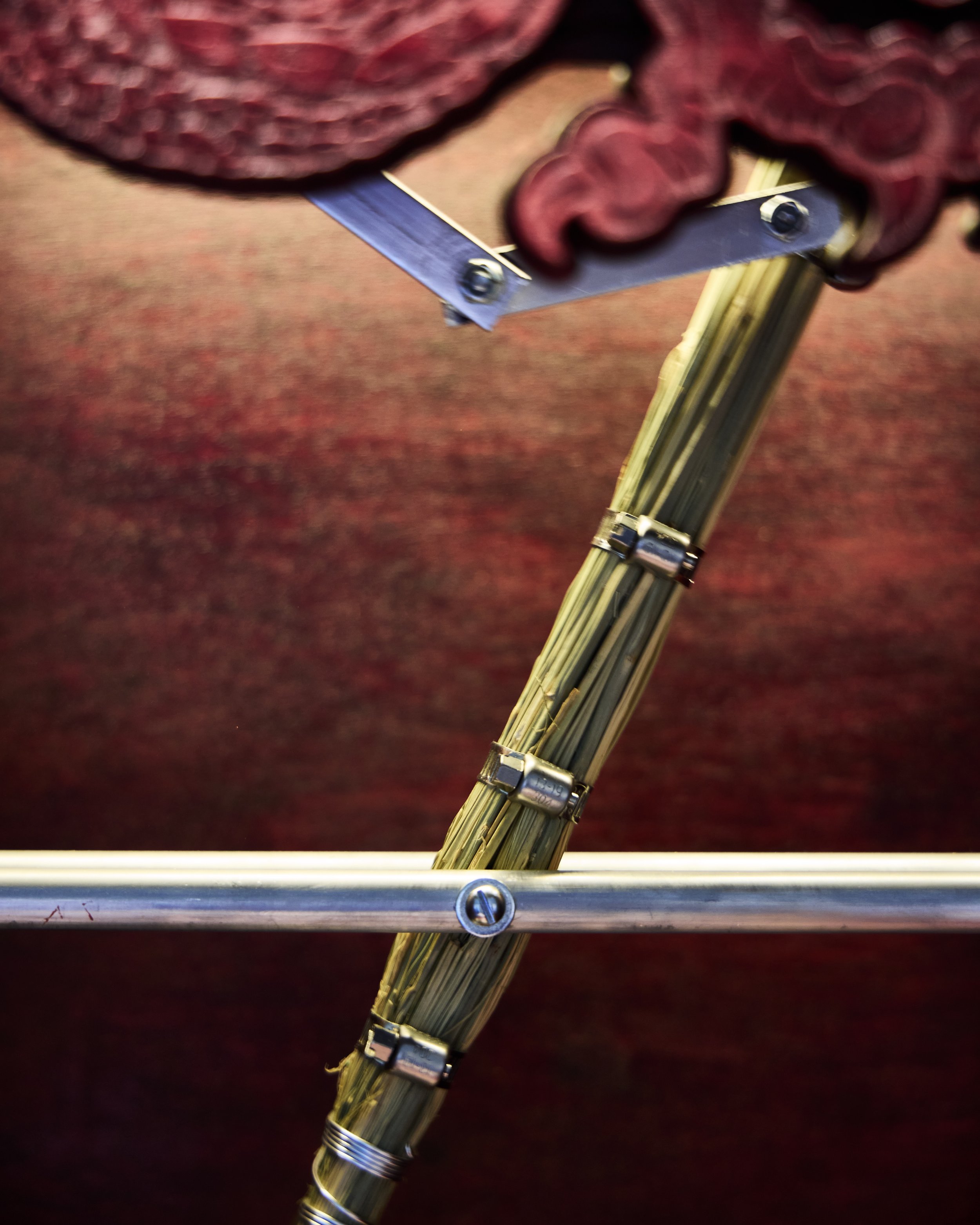Clockwork Mourning
2025
17.25 x 21.75 x 26 in.
incense ash, broomgrass fibers, plastic twine, aluminum wire, solderable breadboard, 24v power supply, microcontroller board, h-bridge motor driver carrier, gearhead motor, stackable headers, jumper wires, solder wire, screws, hose clamps, aluminum flat bars, aluminum dowels, baltic birch plywood, wood glue, cherry-red wood stain, linseed oil/beeswax wood finisher, light bar, incense sticks, rice, metal incense bowl
-
Clockwork Mourning falters on the cusp of two physical states: a contemporary translation of a Vietnamese altar and a defective, malfunctioning pendulum clock. The broom, often perceived as a cleaning-dedicated object, sweeps away at a divot of incense ash—the residual aftermath of remembrance in Vietnamese culture. Through this work, it pivots into various roles: an instrument that dirties the altar through the dispersion of ash, and an hour-hand unable to complete its full cycle. Ash is arguably the most fractured, final state of a human body after a disarticulated skeleton, not unlike the Vietnamese body: obliterated, failed, swept to the wind but never from memory. Like ash, diaspora is dispersion—scattered fragments held together by intangible threads of memory. To remember is a lifelong action. To memorialize is to honor time itself to what has been lost or left behind. It is the defective clock, an intentional step backward, a choice to play the skipping record, and an unwavering decision to carve out the existence of lives and bodies reduced to collateral damage post-war, beyond war itself.
"Where home and history evoke the imagery not only of familial warmth and belonging but also of reeducation camps and killing fields, memory itself is fraught with contestation and contradictions. The source that connotes the solace of belonging and the security of sameness also evokes the memory of death and deprivation, signifying both an indelible connection and, simultaneously, a rupture. War, revolution, and genocide have virtually resulted in a generational death in Cambodia, leaving a very young surviving population. The magnitude of loss and the finality of the rupture echo in the reflection of this elderly refugee: “They are all gone. There’s just silence. Not a trace, not a sound, as if someone just took a broom and swept it all to the wind.” For survivors, it is a silence that always intrudes through the clutters of reconstructed lives, an “absence that is always present.”
- from Katharya Um’s "Exiled Memory: History, Identity, and Remembering in Southeast Asia and Southeast Asian Diaspora"



